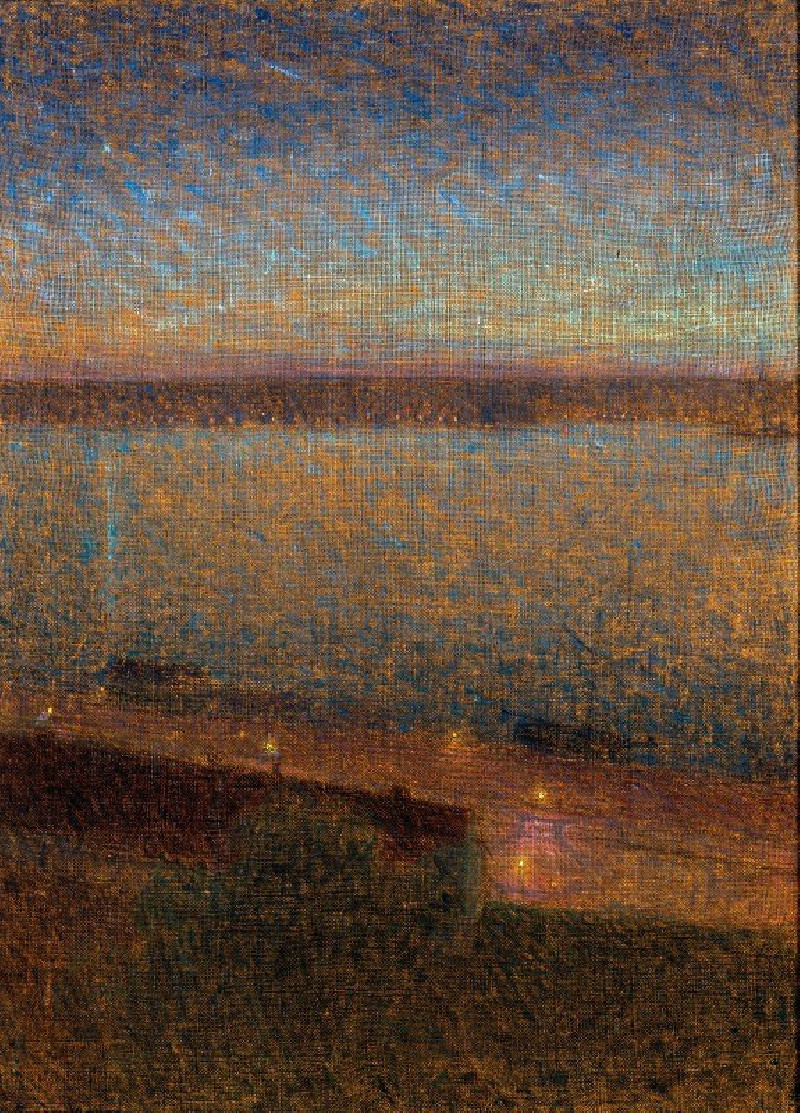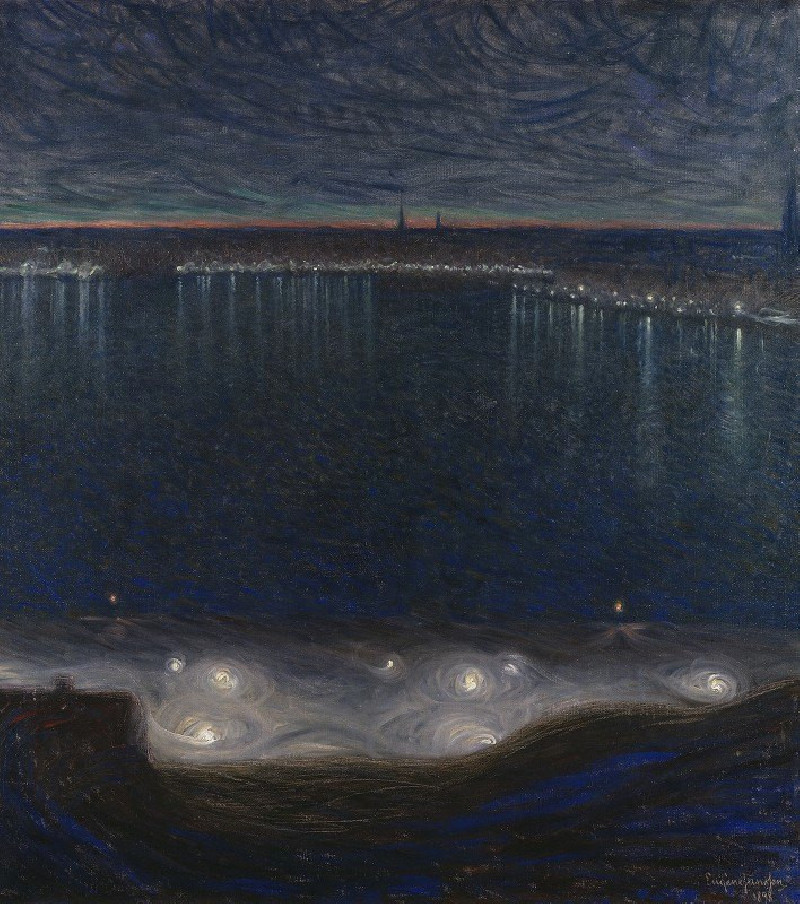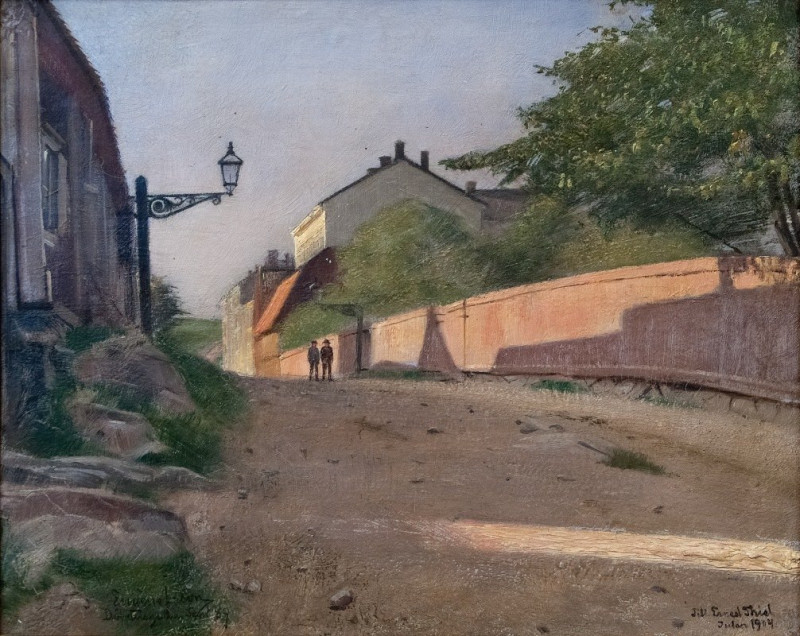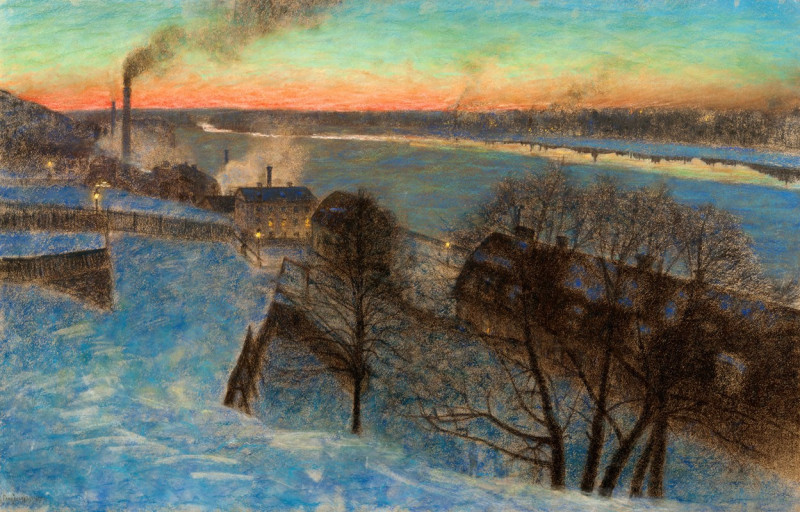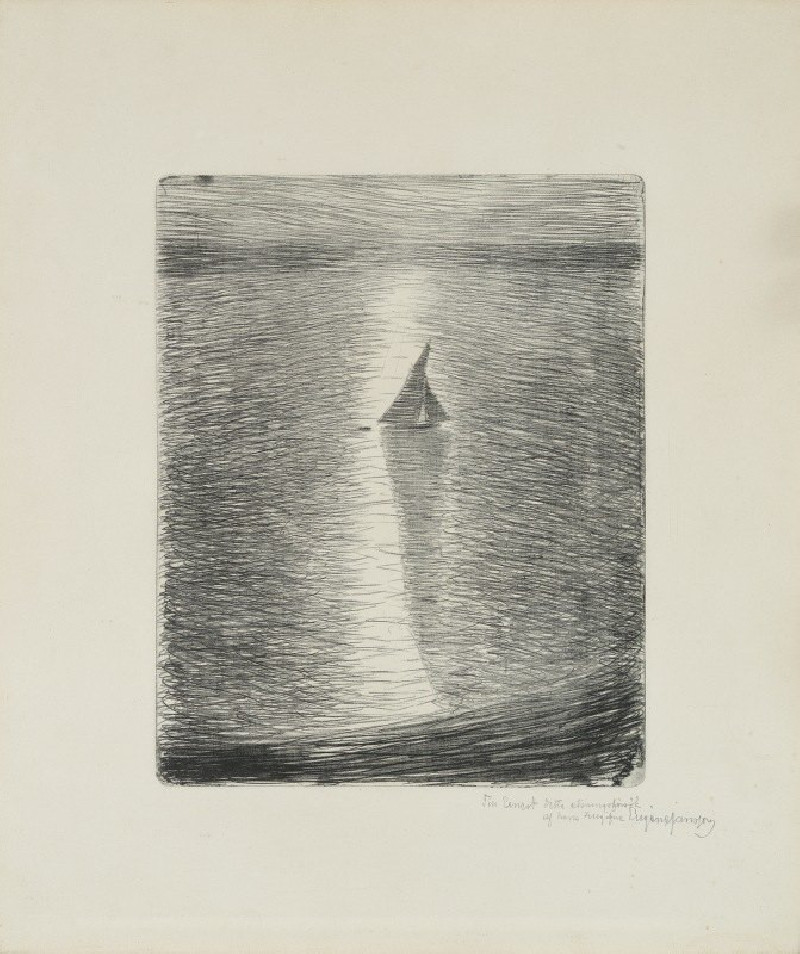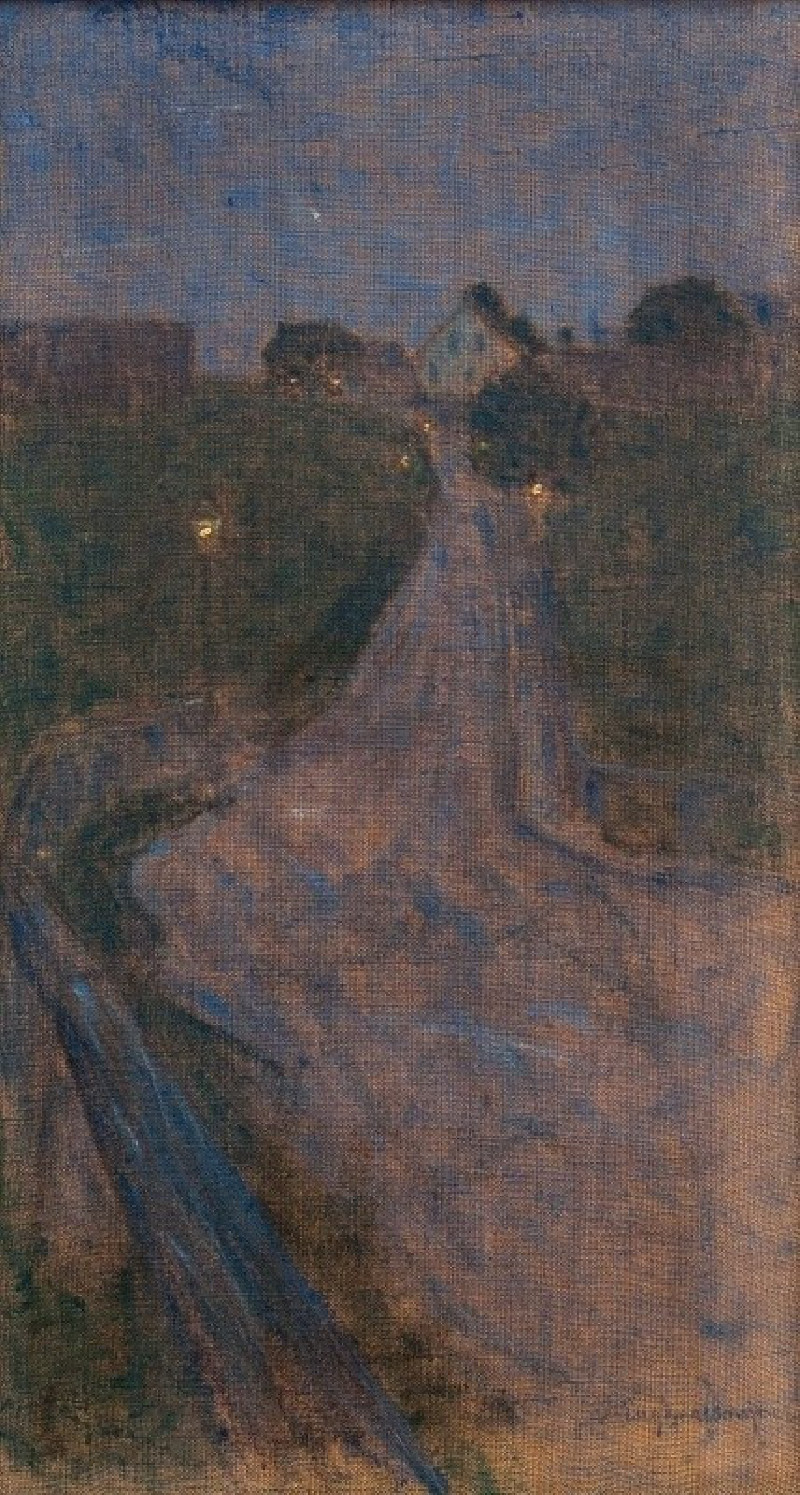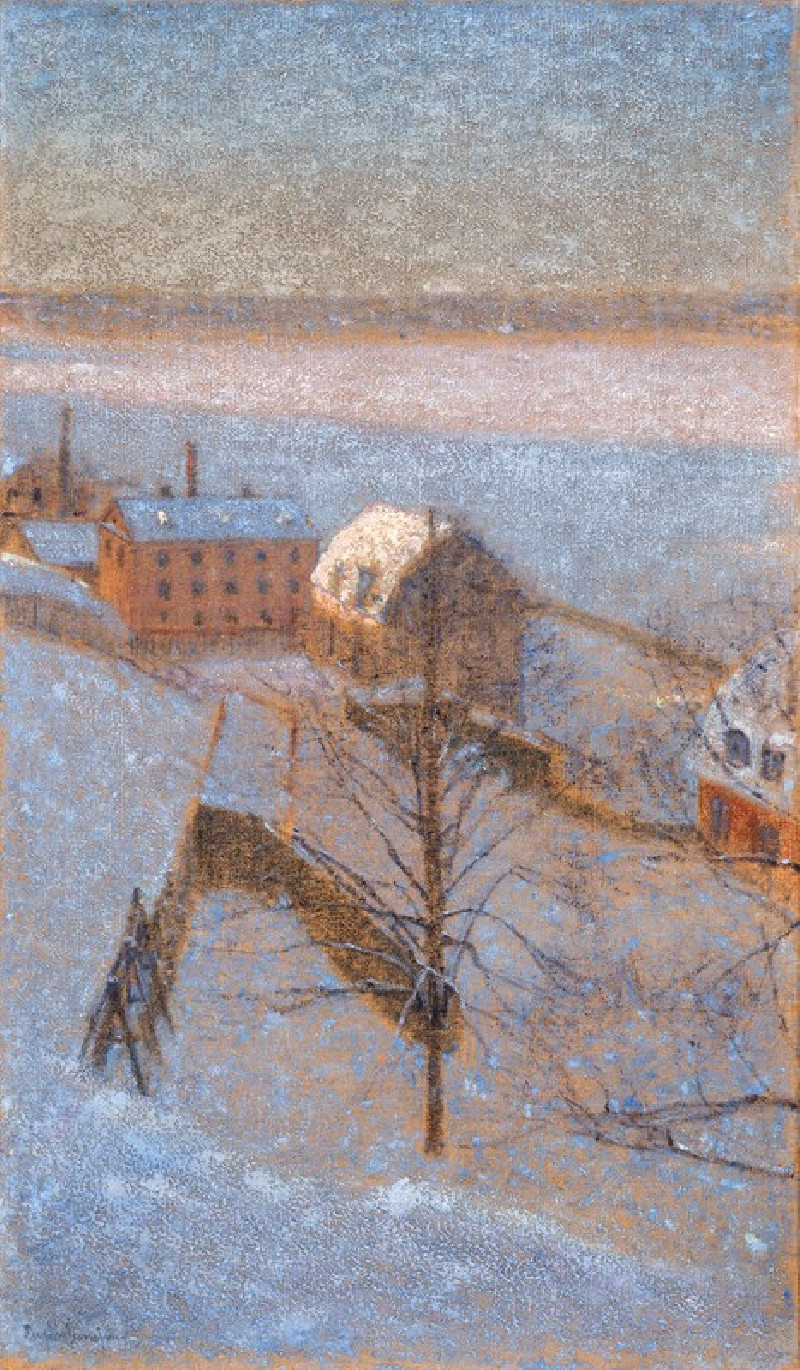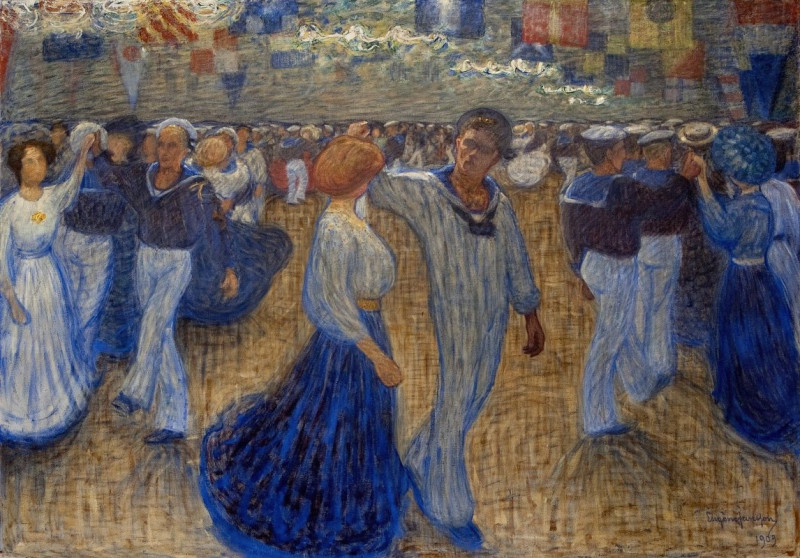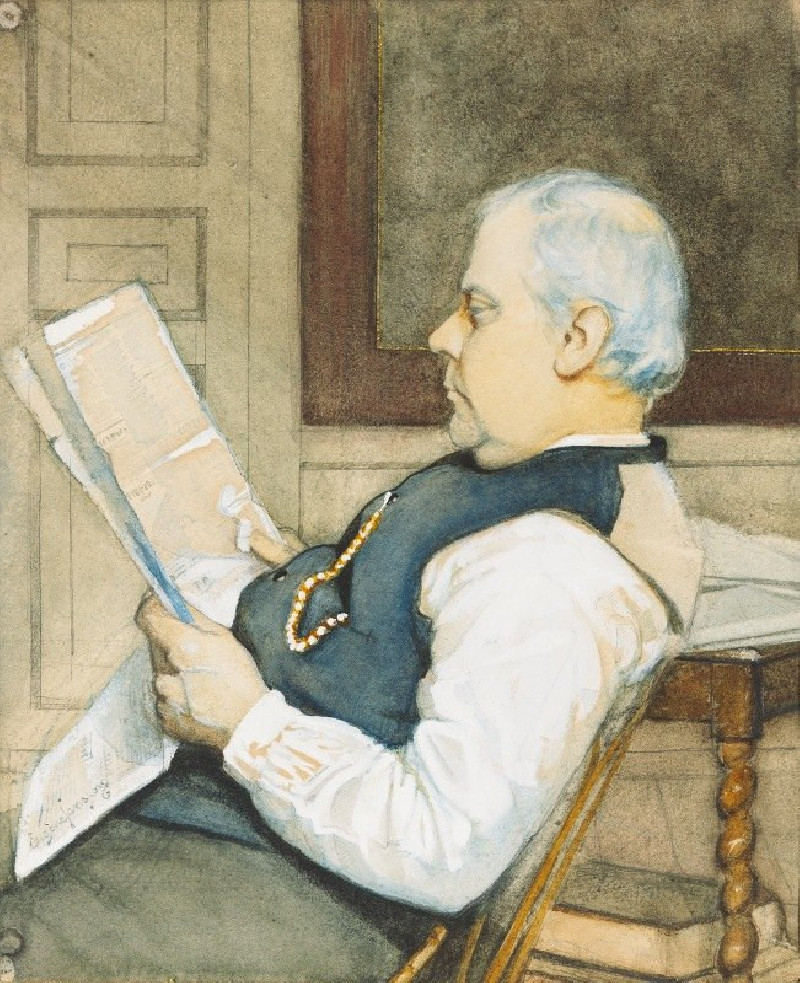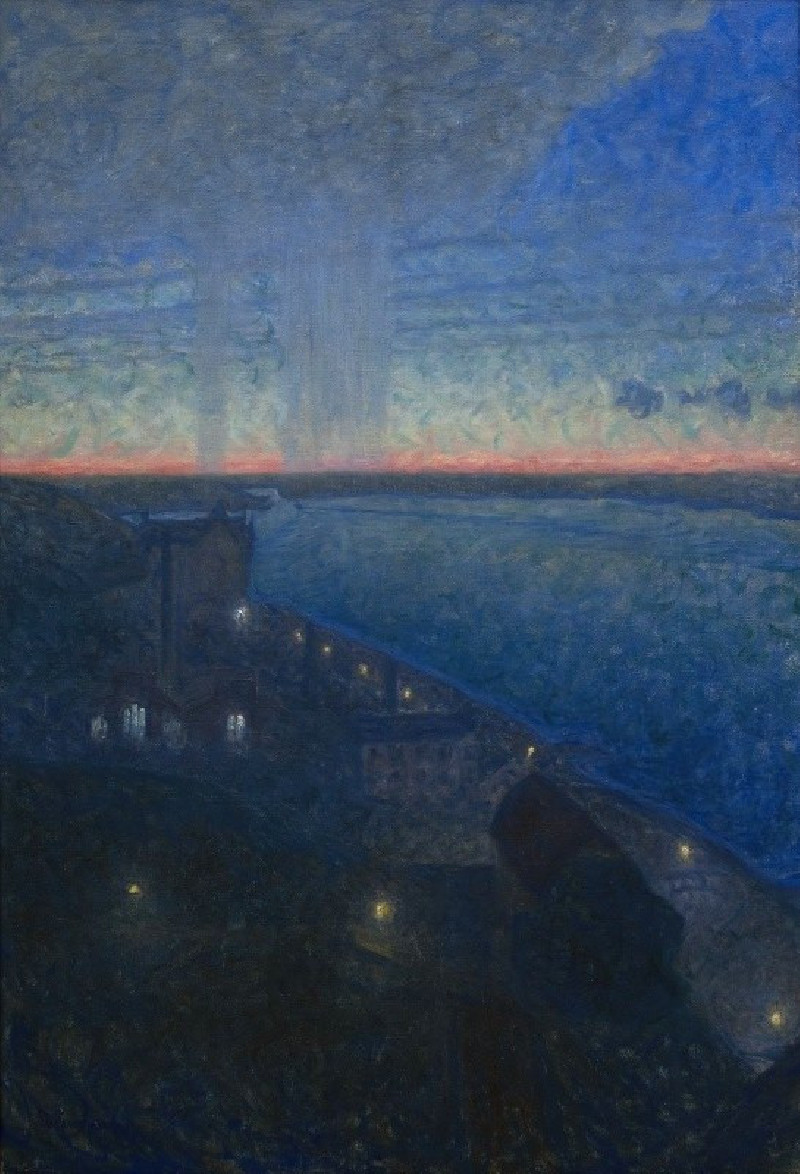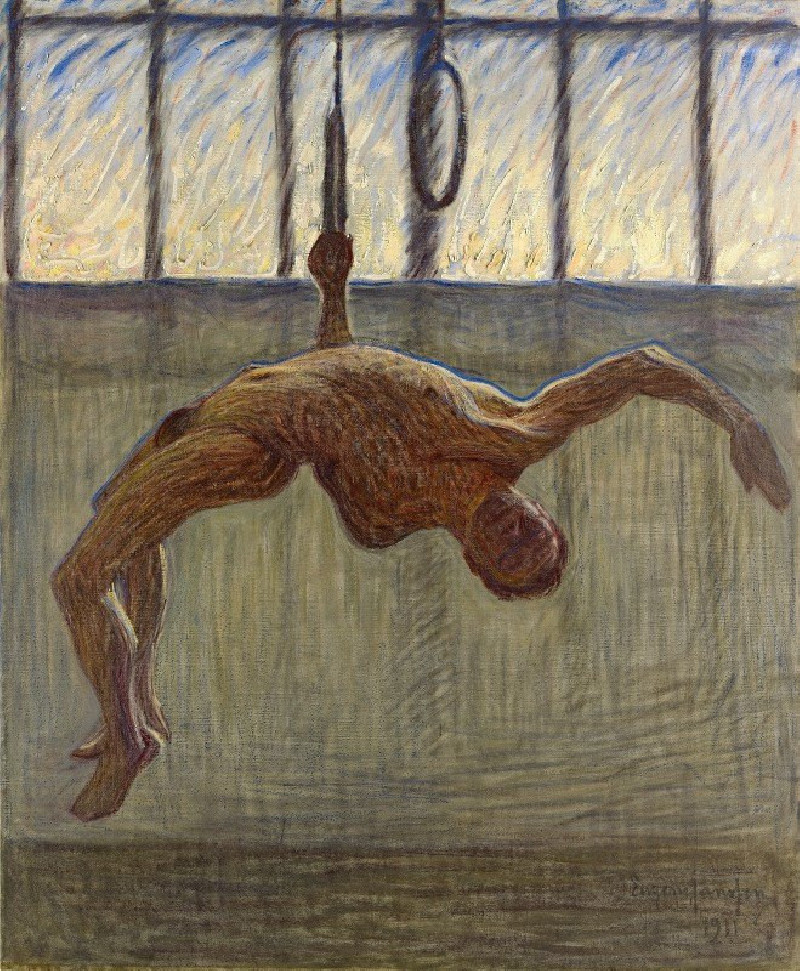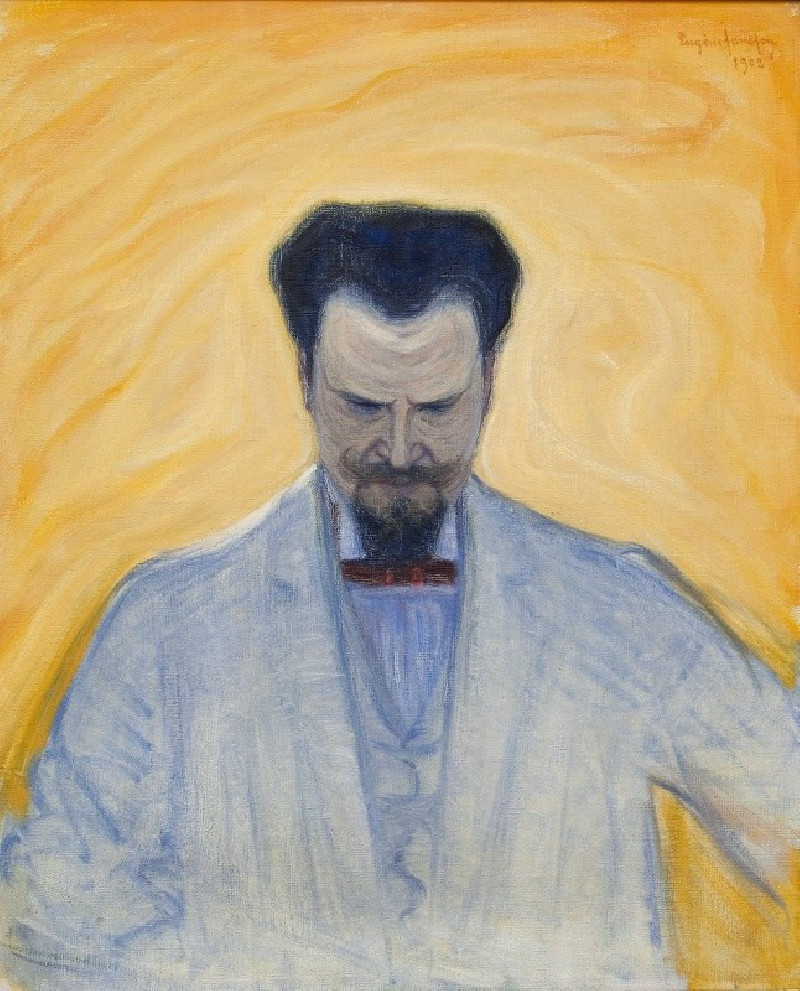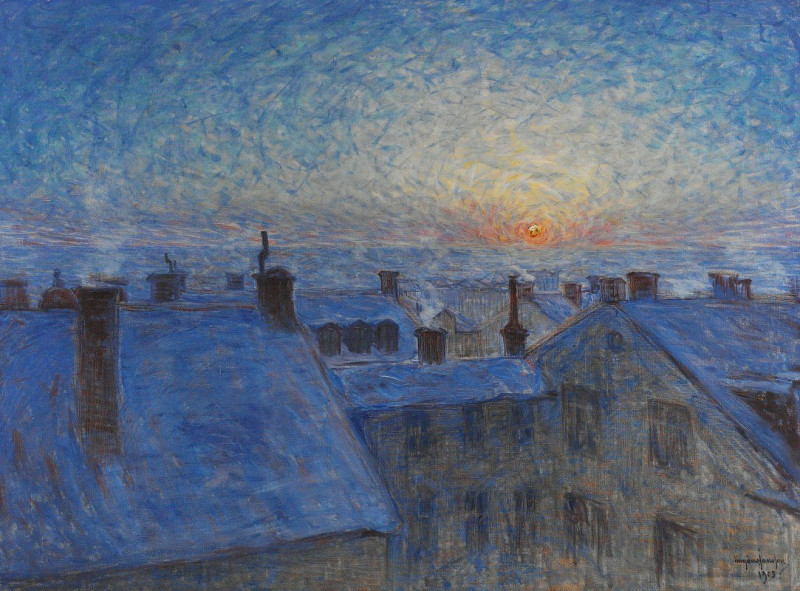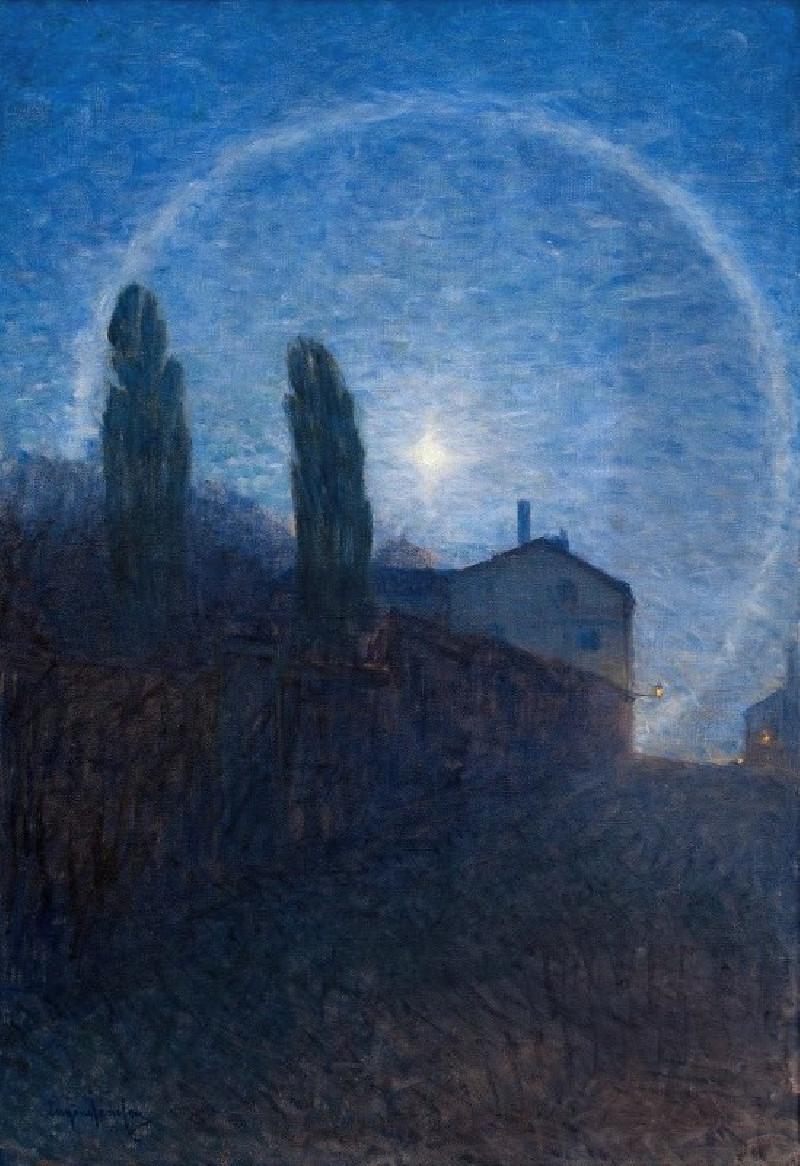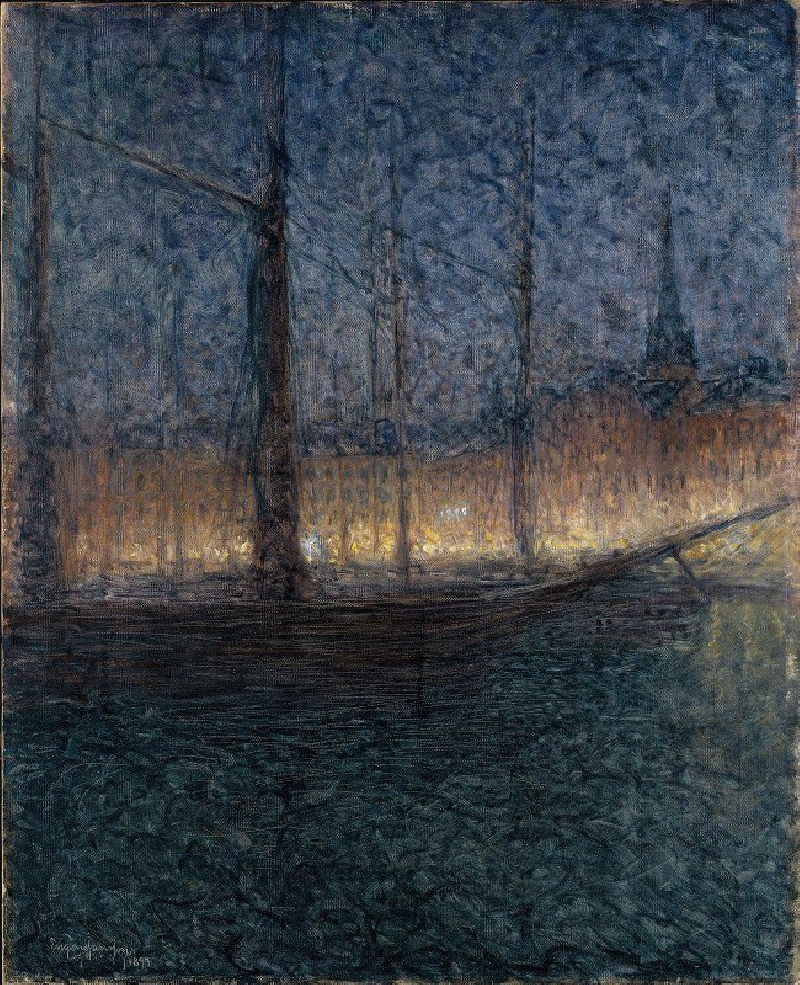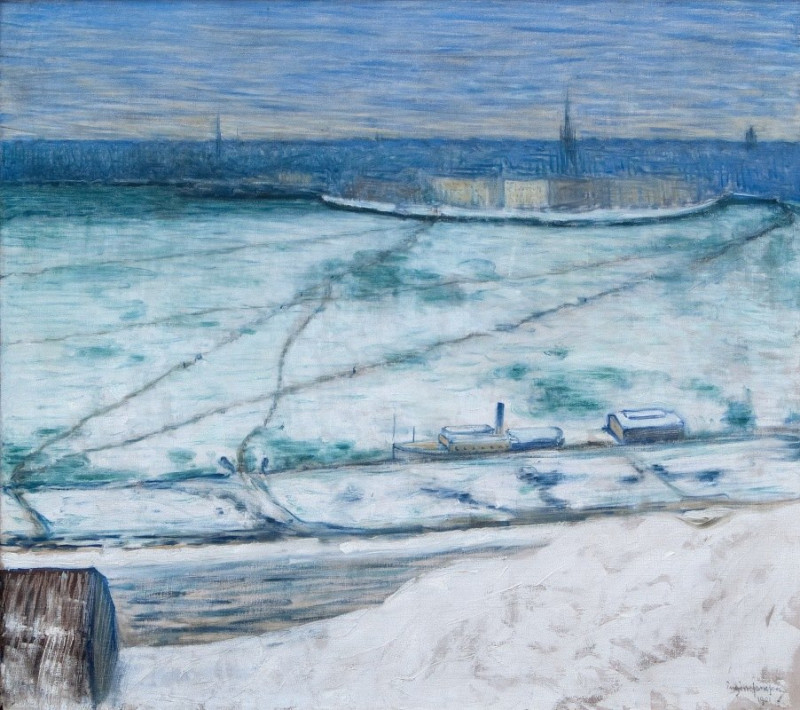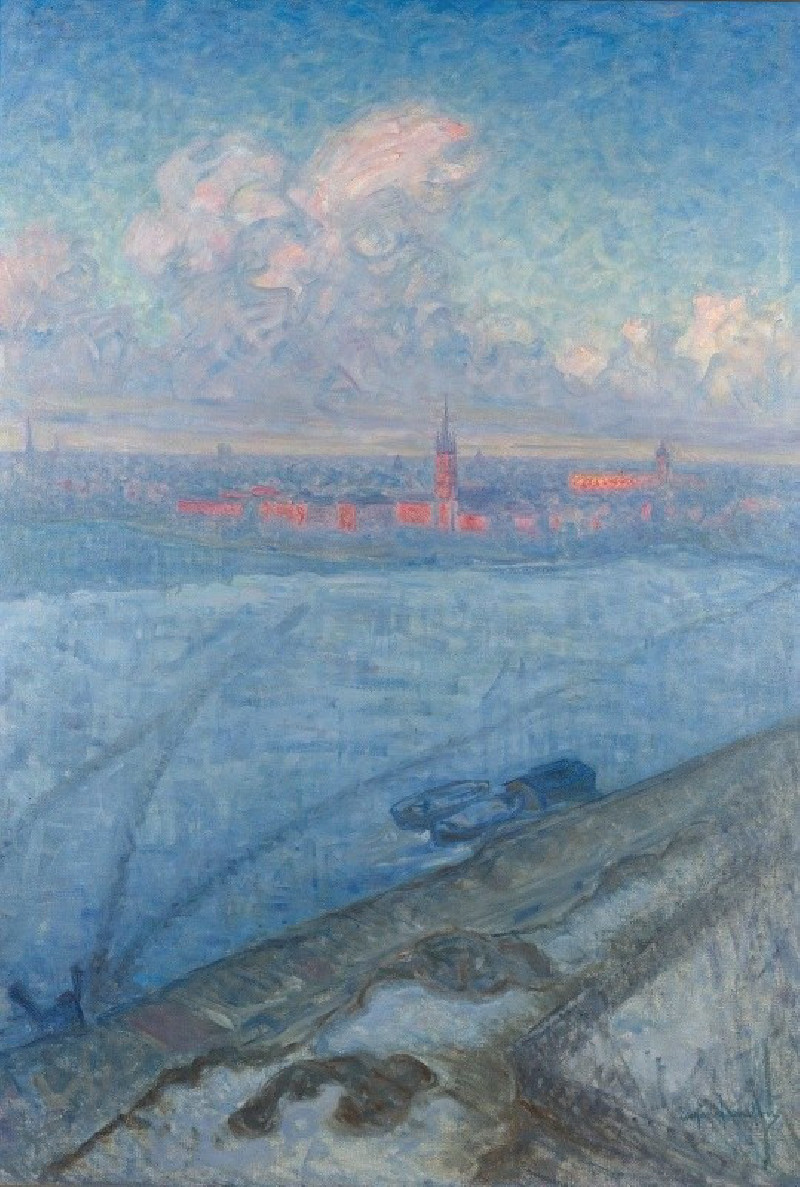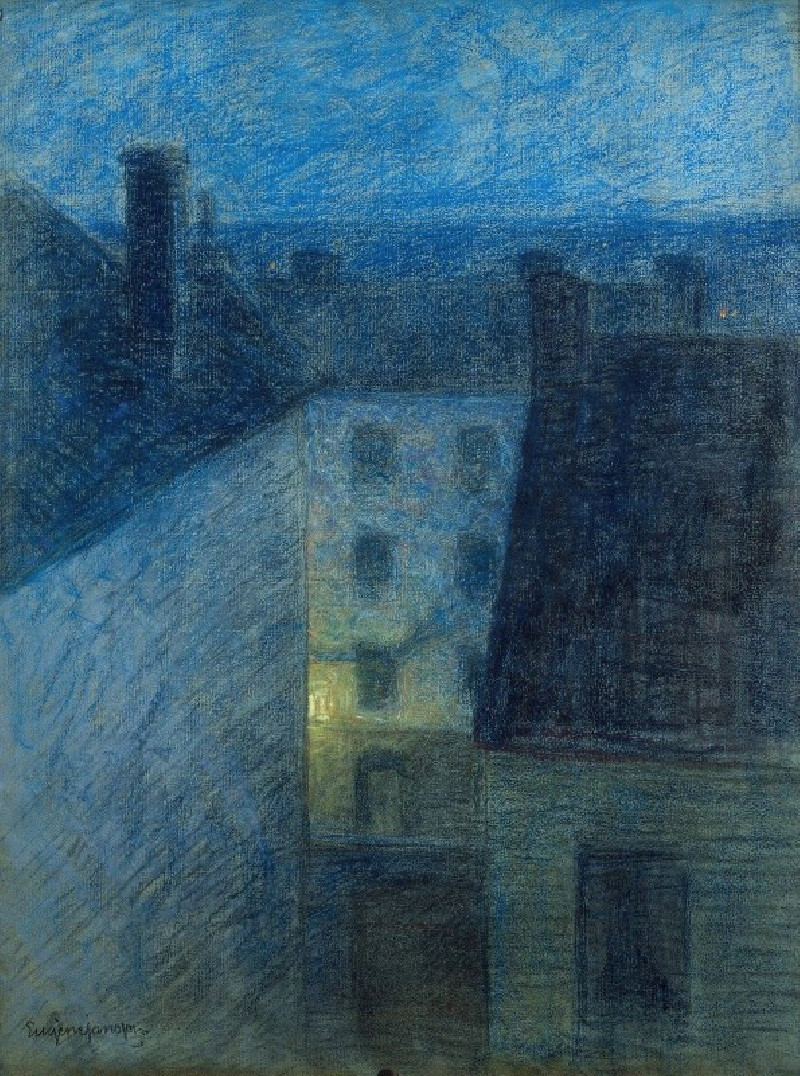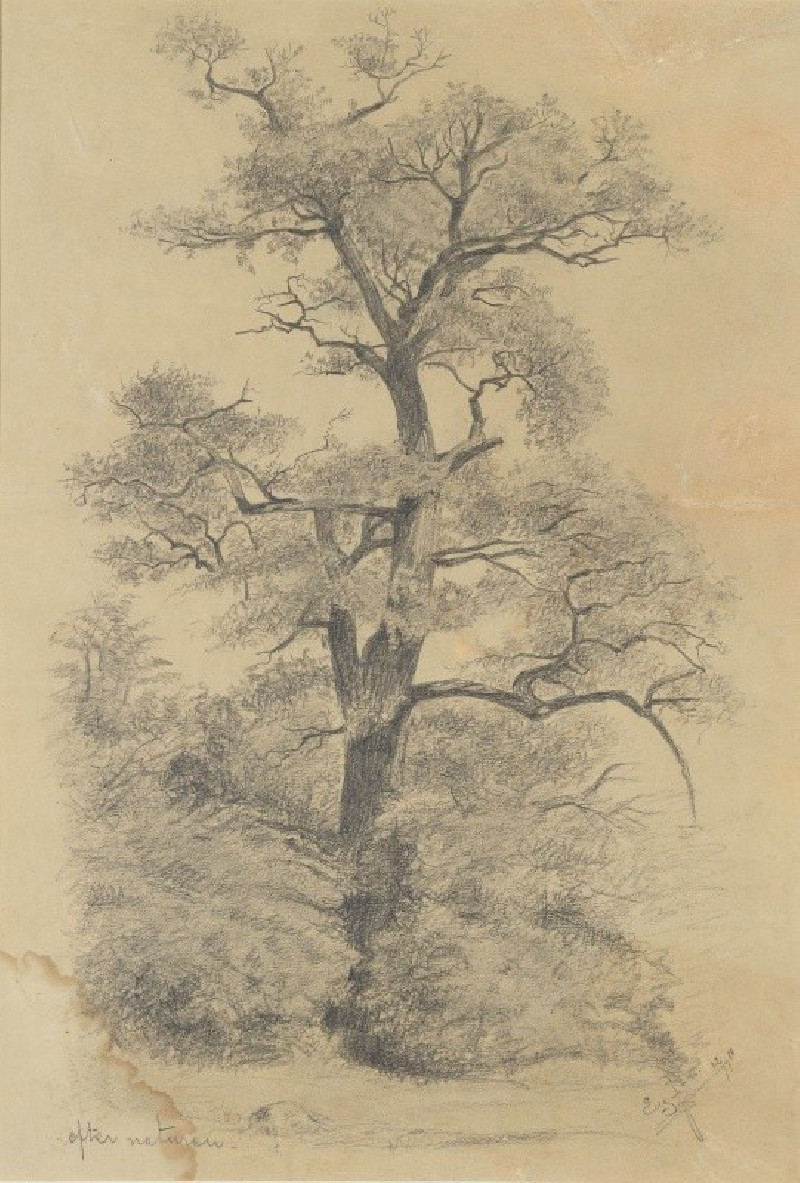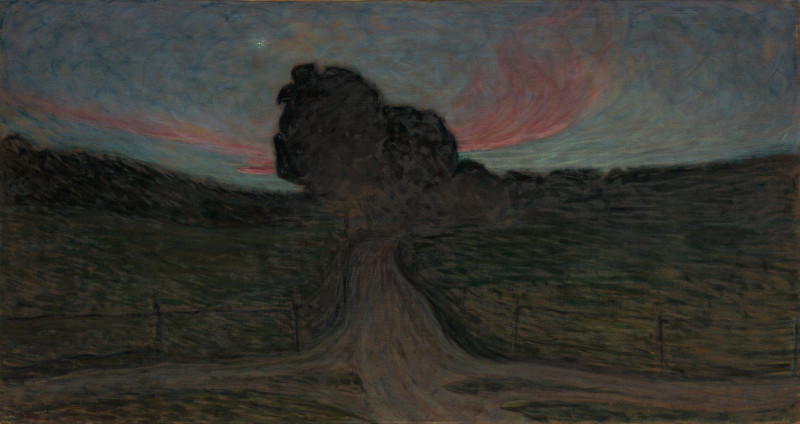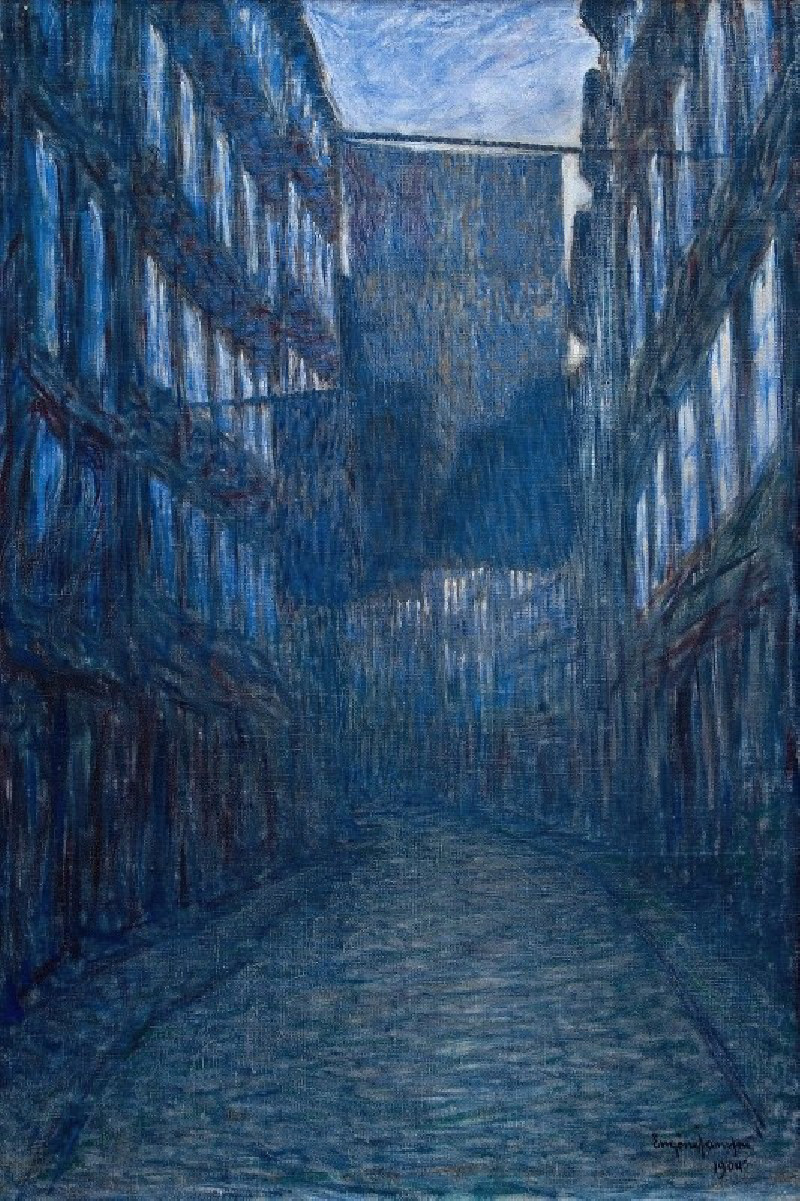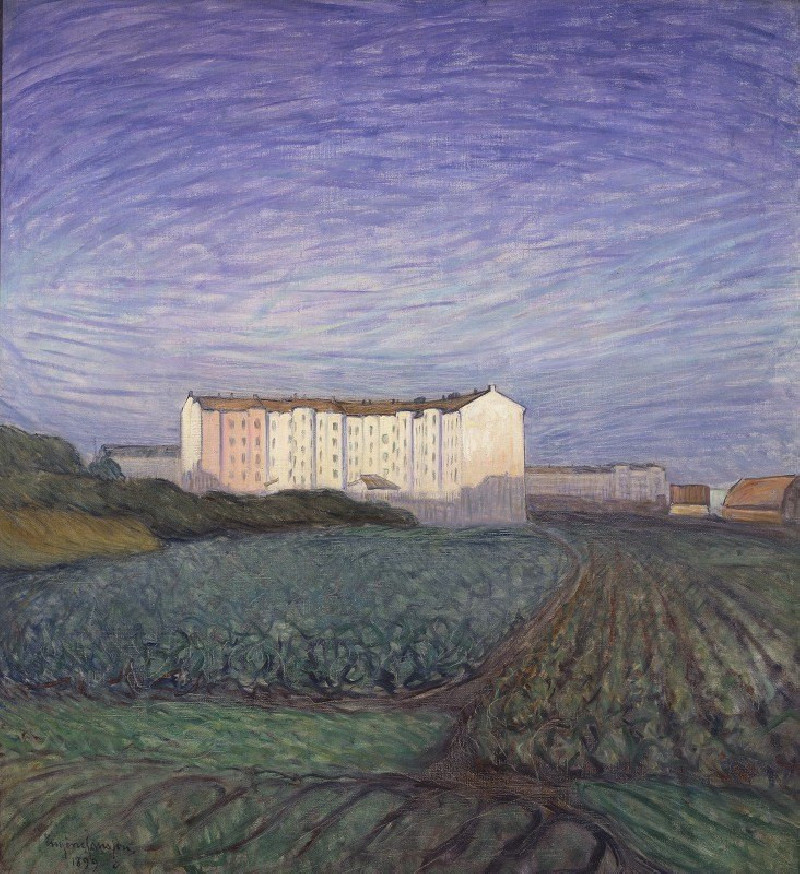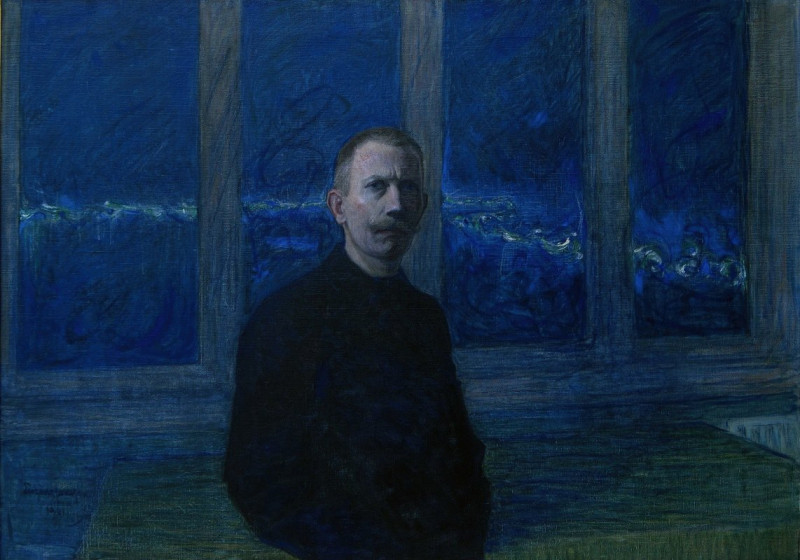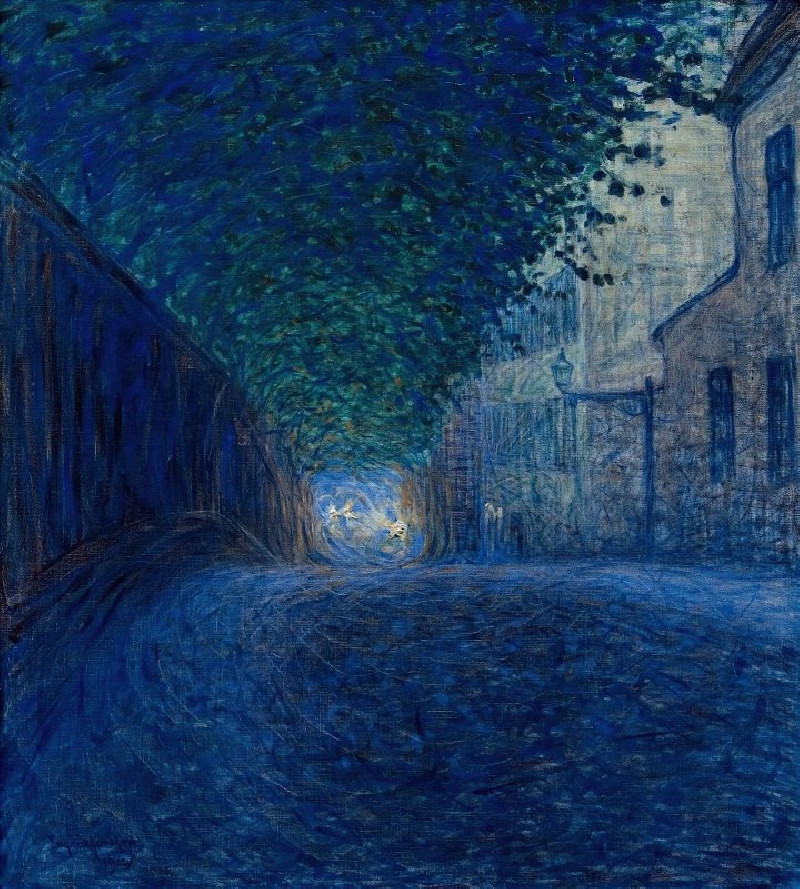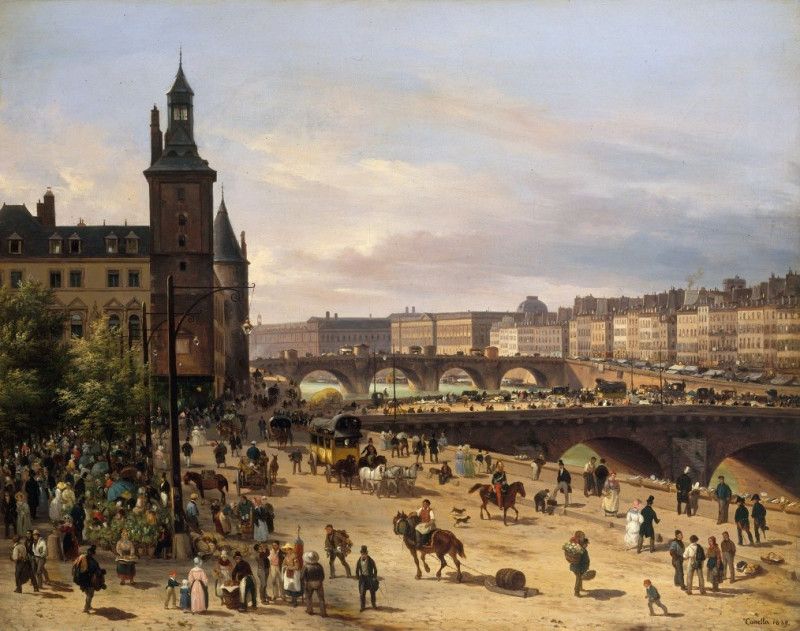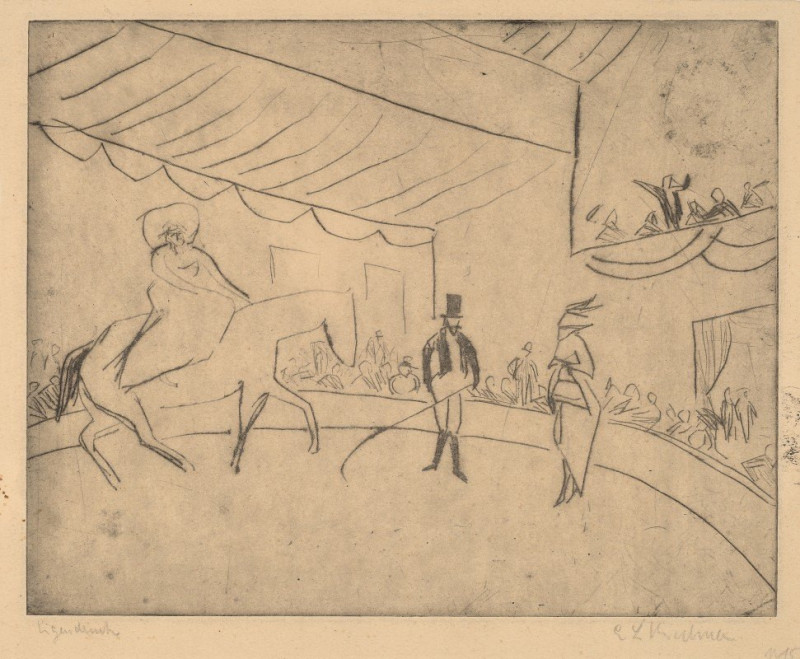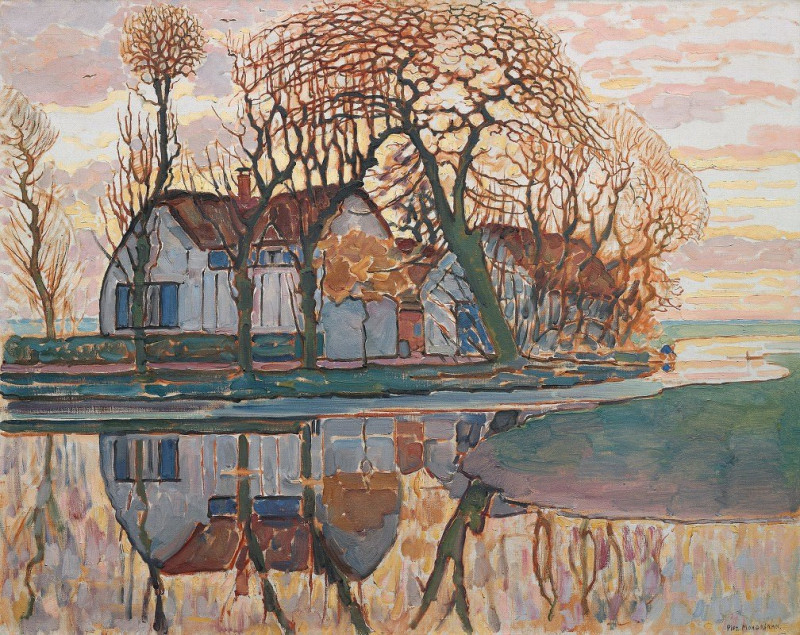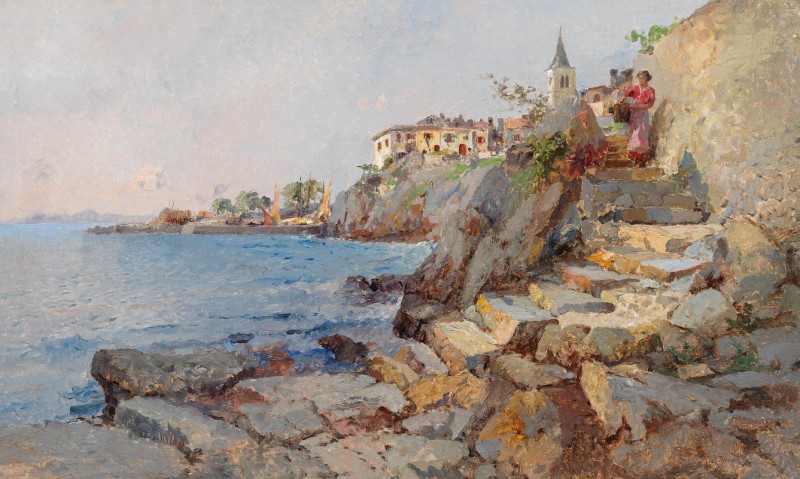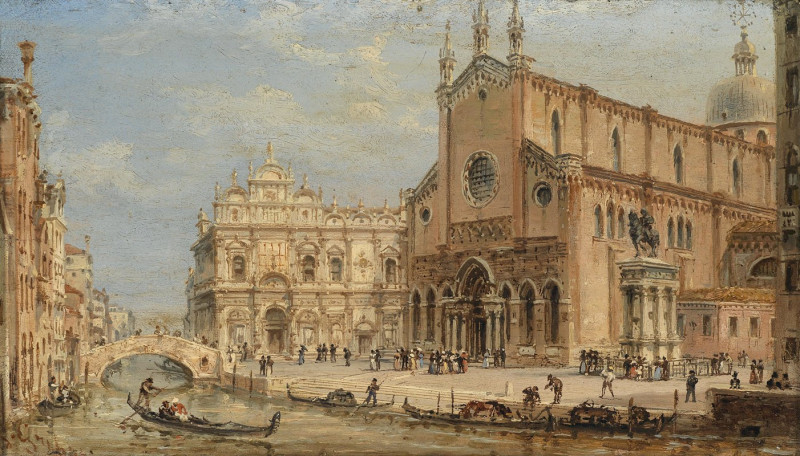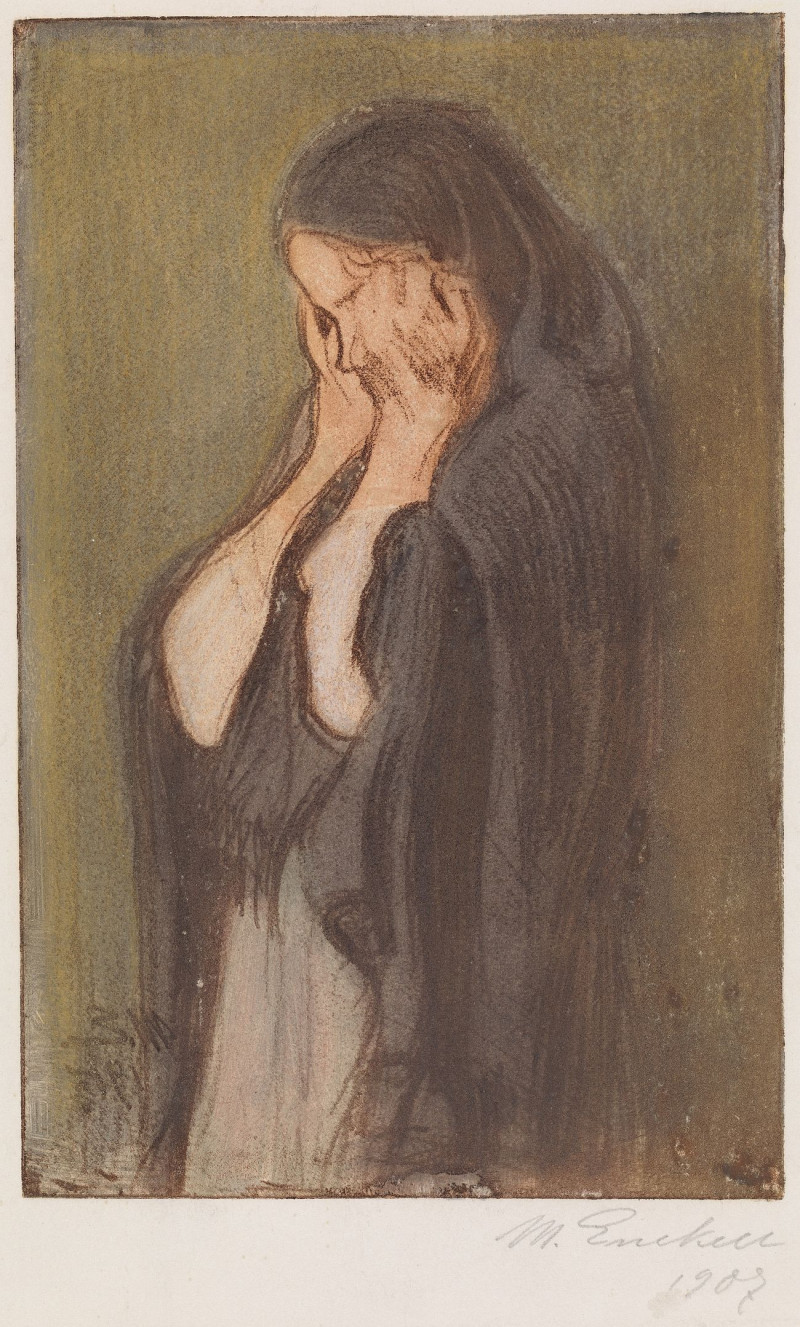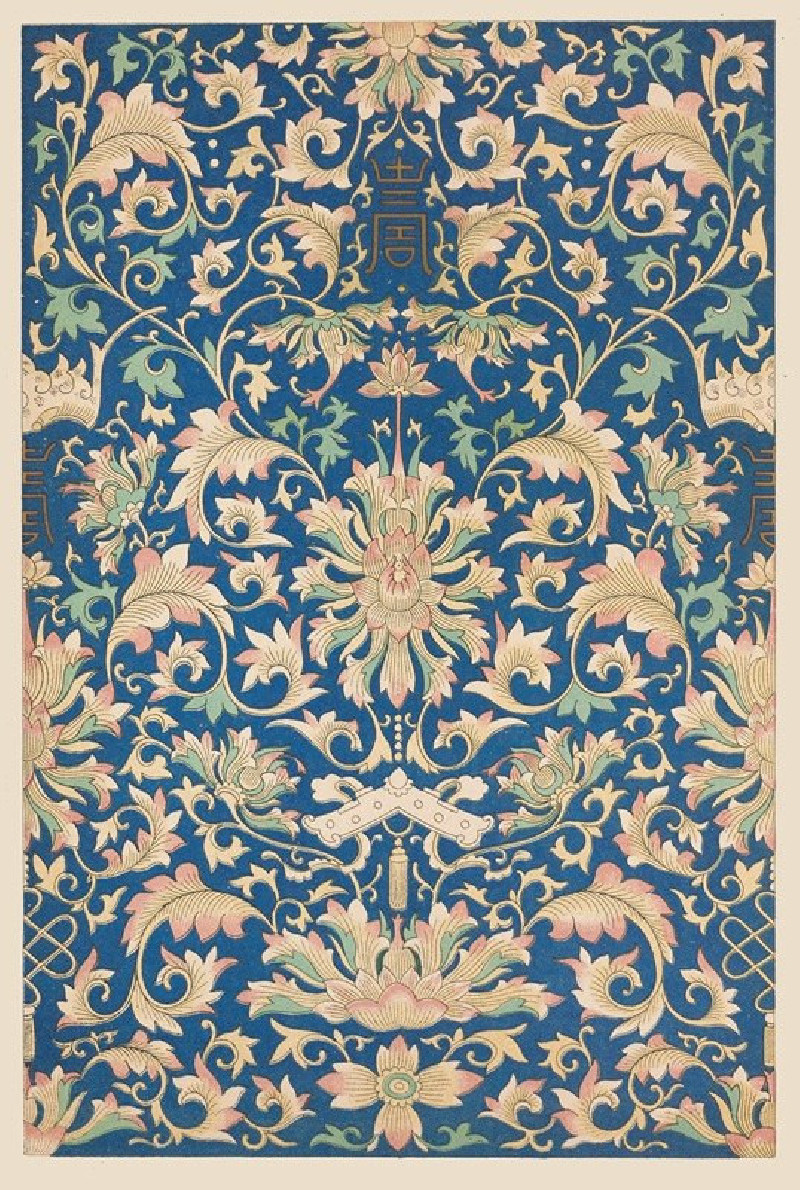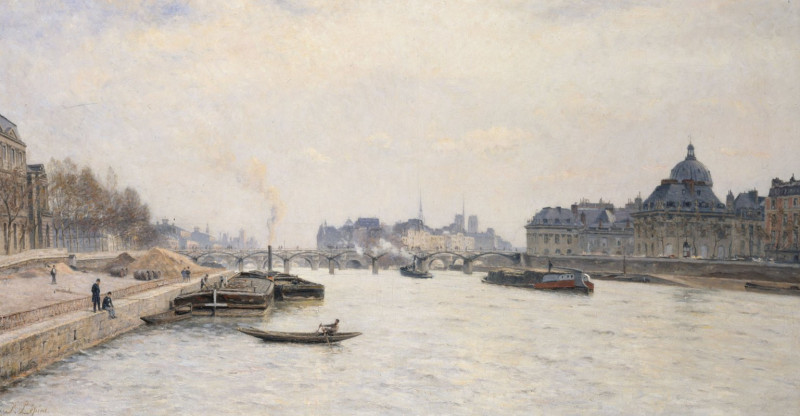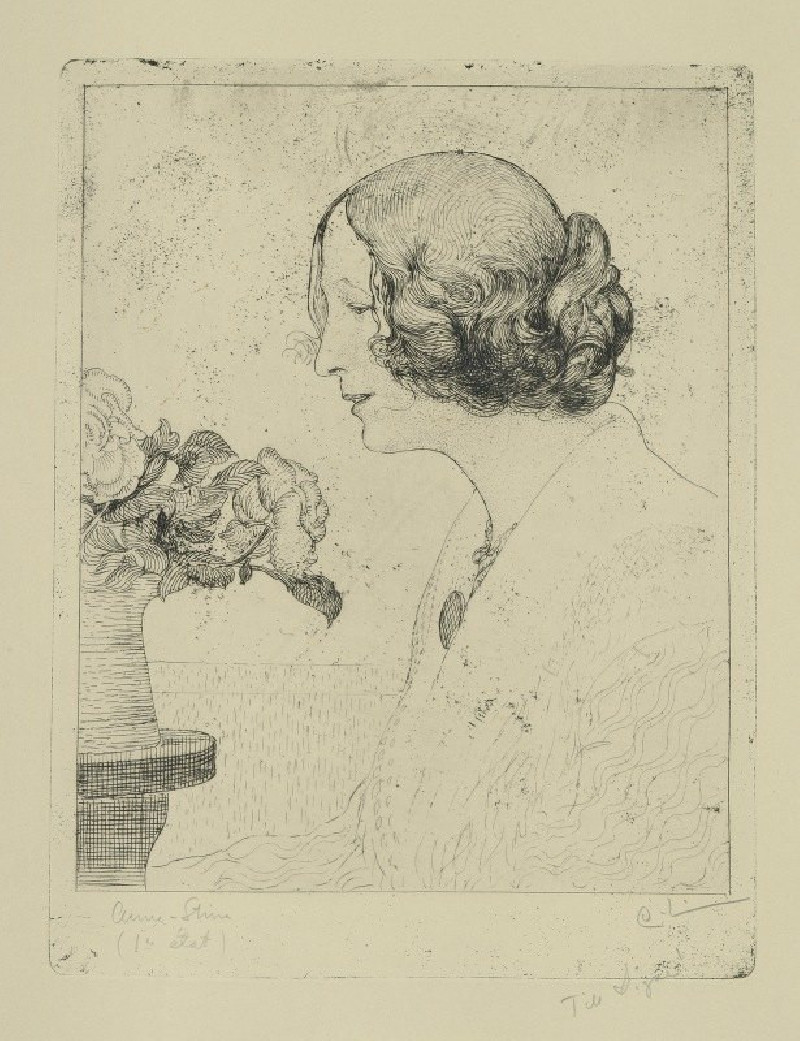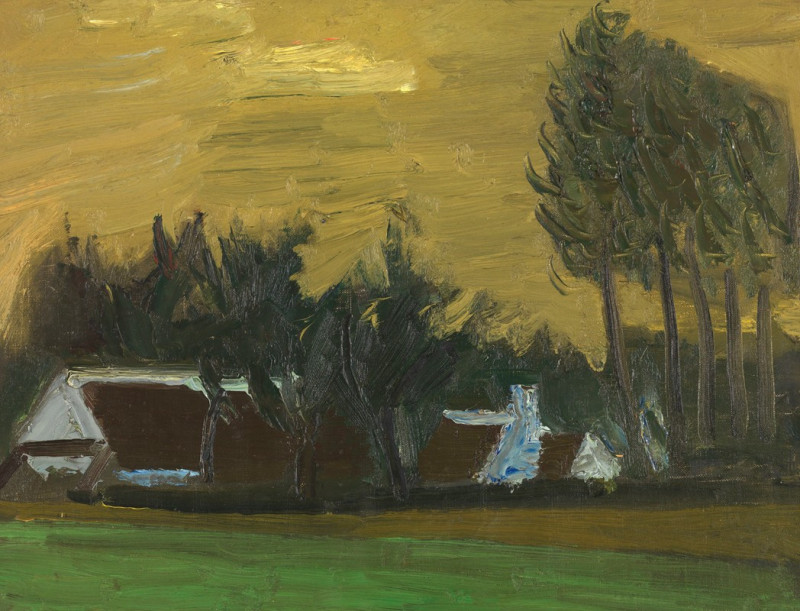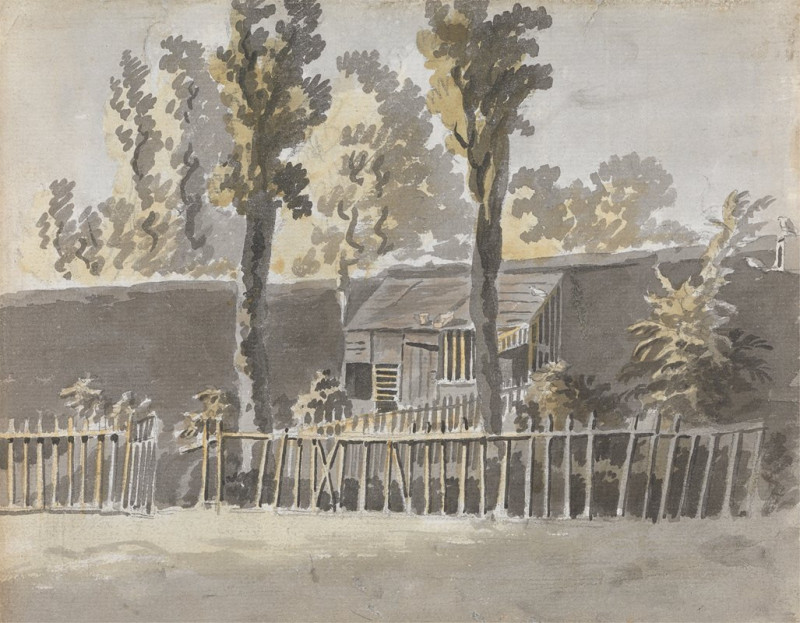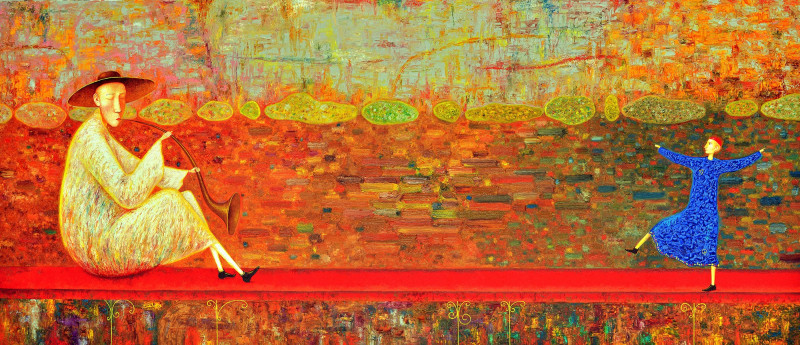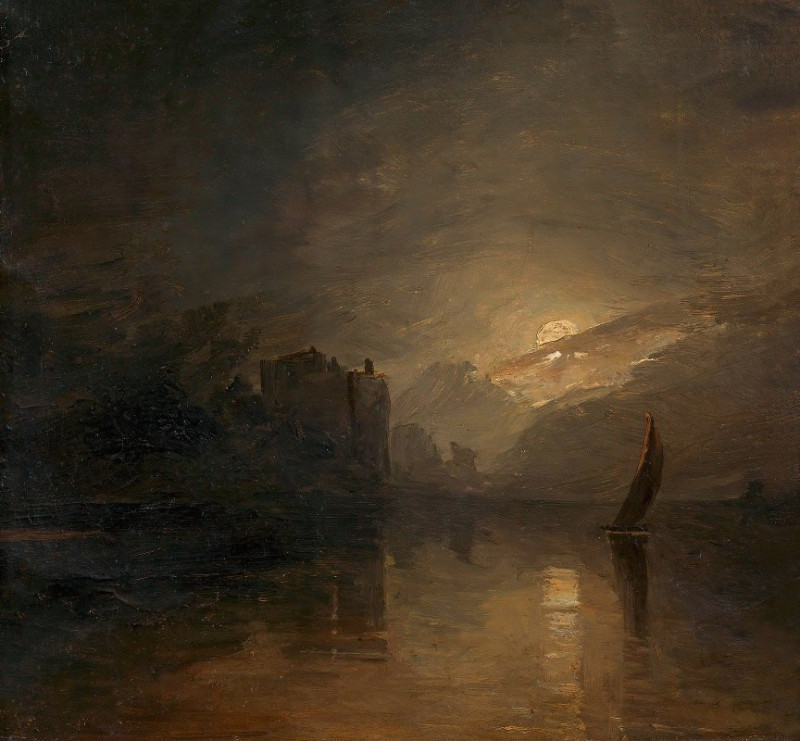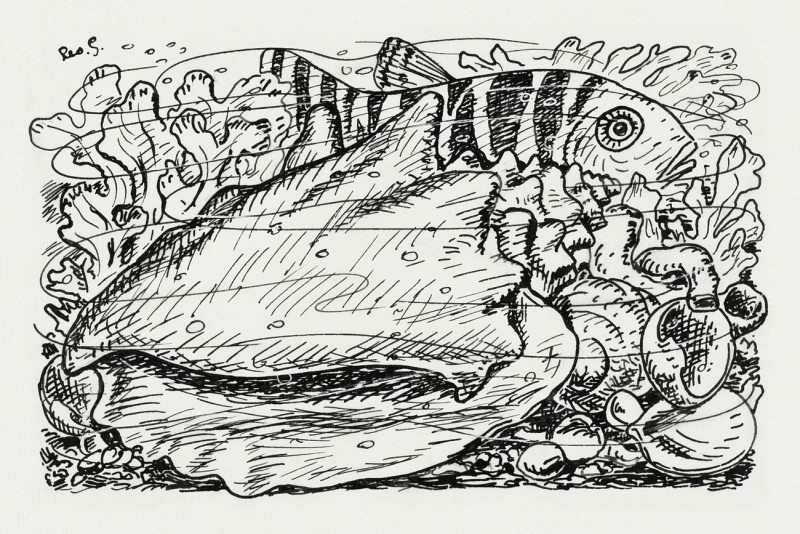Hepatica (1890-1891)
Technique: Giclée quality print
Recommended by our customers
More about this artwork
On display here is "Hepatica," a captivating work by Swedish painter Eugène Jansson, dated from 1890-1891. This piece beautifully encapsulates a serene, late winter or early spring day in a sparse Scandinavian forest. The painting is remarkable for its subdued and harmonious palette that blends cool grays and soft browns, creating an atmosphere of tranquility and quiet anticipation of the season ahead.The composition features a wooded scene where the bare, slender trunks of the trees stretch upwards towards a muted sky, casting light shadows over the leaf-strewn ground. Central to the scene are three figures, each engaged in their own quiet activity, suggesting a moment of peaceful coexistence with nature. The presence of these figures adds a human element to the otherwise stark landscape, offering a narrative of leisure and reflection.Jansson's use of light and shadow, combined with his detailed renderings of the textures of tree bark and ground foliage, provides a depth and realism that draws the viewer into the scene. "Hepatica" is not just a visual experience; it is a peaceful encounter with the natural world, rendered with a gentle, masterful touch.
Delivery
Returns
Eugène Fredrik Jansson (18 March 1862, Stockholm – 15 June 1915, Skara) was a Swedish painter known for his night-time land- and cityscapes dominated by shades of blue. Towards the end of his life, from about 1904, he mainly painted male nudes. The earlier of these phases has caused him to sometimes be referred to as blåmålaren, "the blue-painter".


